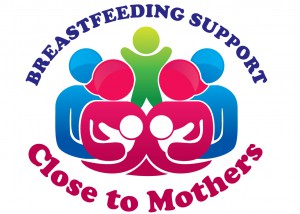 The core of Attachment Parenting is responding to our children with sensitivity. This third of API’s Eight Principles of Parenting is one of two principles–the other is striving for balance–that are part and parcel to the whole of the parenting approach, that thread themselves through each of the remaining six principles, including feeding with love and respect.
The core of Attachment Parenting is responding to our children with sensitivity. This third of API’s Eight Principles of Parenting is one of two principles–the other is striving for balance–that are part and parcel to the whole of the parenting approach, that thread themselves through each of the remaining six principles, including feeding with love and respect.
Attachment Parenting International recognizes that breastfeeding can be difficult in our society. It is hard to do something different than our family and friends, our social network prior to becoming parents, and to find a new support system for our choices. It is hard to navigate new motherhood relatively alone, compared to other cultures where family rallies together to give the mother a baby moon, a time when mom and baby can bond uninterrupted while housework and caring for other children are taken up by others in her life. It is hard to make the choice to return to work and then try to integrate a child care provider into our alternative way of parenting. It is hard to pump while away from baby. And it is hard to continue to push through difficulties, whether it be a poor latch or milk supply issues or teething or night-waking, when so many others in our lives are trying to convince us to just give a bottle of formula.
But breastfeeding, like any choice made through the lens of Attachment Parenting, is ultimately about responding with sensitivity to our babies. There are great nutritional and health benefits to feeding breastmilk, but what makes breastfeeding special enough for many mothers to continue despite societal pressure and their personal hurdles is that breastfeeding is more than a way to feed their babies — that it offers the beginnings of a relationship with their child that cannot be replicated in any other way.
When I work with clients through the WIC program, it is clear to me that breastfeeding is 10% know-how and 90% desire. Every mother-baby pair is different, and while peer counselors and lactation professionals can offer help for various problems that arise, each situation is unique. The mother has to want to breastfeed, to learn this relationship with their child no matter what, and that’s what makes breastfeeding successful.
The human mother was designed to breastfeed so that a relationship is borne out of the effort, out of each mother and her baby learning about each other and what will work or not, out of the gaze between one another, out of the oxytocin rush each receives, out of the gentle discipline necessary in teaching baby not to bite or to eventually night-wean, out of the mother finding her balance while caring for her baby, out of learning to be flexible as baby grows and needs change. We can find a bit of each of API’s Eight Principles of Parenting within the act of breastfeeding. Breastfeeding behavior is very literally the embodiment of responding with sensitivity to our babies–and responding with sensitivity is a skill and artform that all mothers need no matter their child’s age.

Feeding baby formula from a nplpie, especially when they are very young, can make them turn away from the breast. The fake nplpie is much easier to get milk out of. The less your baby drinks your milk, the less milk your body will make. If you would like to make more milk, feed your baby until she is full/sleeping. The downfall is that it might take a really long time. The upside is that within 24 hours, the body will adjust milk production accordingly. This is not to say you cannot feed your baby formula if you want. But, if you are truly dedicated to breast feeding, I wouldn’t try formula until your routine is well-established.